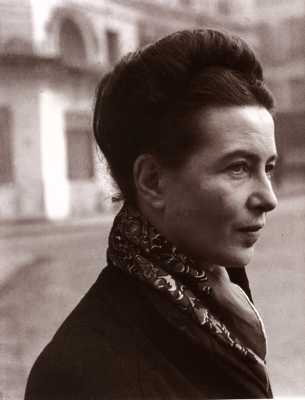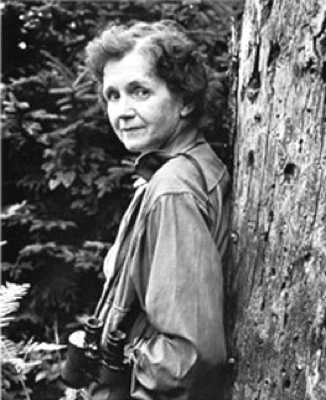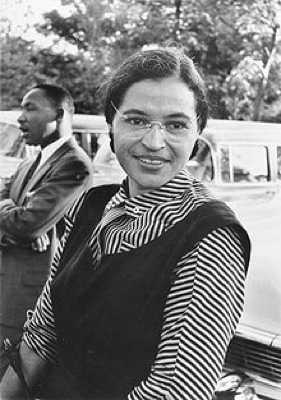 Politics
Politics  Politics
Politics  Weird Stuff
Weird Stuff 10 Eggs-traordinarily Odd Eggs
 History
History 10 Desperate Last Stands That Ended in Victory
 Animals
Animals Ten Times It Rained Animals (Yes, Animals)
 Mysteries
Mysteries 10 Devastating Missing Child Cases That Remain Unsolved
 Creepy
Creepy 10 Scary Tales from the Middle Ages That’ll Keep You up at Night
 Humans
Humans 10 One-of-a-kind People the World Said Goodbye to in July 2024
 Movies and TV
Movies and TV 10 Holiday Movies Released at Odd Times of the Year
 Politics
Politics 10 Countries Where Religion and Politics Are Inseparable
 Weird Stuff
Weird Stuff 10 Freaky Times When Famous Body Parts Were Stolen
 Politics
Politics The 10 Most Bizarre Presidential Elections in Human History
 Weird Stuff
Weird Stuff 10 Eggs-traordinarily Odd Eggs
 History
History 10 Desperate Last Stands That Ended in Victory
Who's Behind Listverse?

Jamie Frater
Head Editor
Jamie founded Listverse due to an insatiable desire to share fascinating, obscure, and bizarre facts. He has been a guest speaker on numerous national radio and television stations and is a five time published author.
More About Us Animals
Animals Ten Times It Rained Animals (Yes, Animals)
 Mysteries
Mysteries 10 Devastating Missing Child Cases That Remain Unsolved
 Creepy
Creepy 10 Scary Tales from the Middle Ages That’ll Keep You up at Night
 Humans
Humans 10 One-of-a-kind People the World Said Goodbye to in July 2024
 Movies and TV
Movies and TV 10 Holiday Movies Released at Odd Times of the Year
 Politics
Politics 10 Countries Where Religion and Politics Are Inseparable
 Weird Stuff
Weird Stuff 10 Freaky Times When Famous Body Parts Were Stolen
Top 10 Women of the 20th Century
I think Listverse is at its best when it teaches you things you did not know, and when it provokes debate. Any list of the most important, influential and best women of the 20th century is certainly bound to be provocative. So, if you think any of these do not deserve to be here, or there is someone I have neglected unfairly, drop in a comment below.

Born into wealth, the niece of Teddy Roosevelt, Eleanor Roosevelt might have lived the quiet life of many upper-class women of her day. She married her cousin, Franklin Roosevelt, in 1905, and soon became involved in his political life. This union would shape American politics for a generation. Eleanor was an instrumental part of her husband’s campaigning, especially after his attack of polio. This activity was widely mocked in the press when she continued to speak out on social matters as first lady, a position previously involving only being hostess at the White House. It is tempting to think she learned the concept of being ‘a bully pulpit’ from her uncle Teddy. Eleanor followed her own political agenda as well as supporting her husband. She was a strong and outspoken supporter of African-American rights. She objected to the interring of Japanese-Americans once the US entered World War 2. After FDR’s death, Eleanor served on the UN Commission for Human Rights. She continued to serve the causes she believed in, until her death in 1962. While she held no elected office, she was a wide reaching social reformer who is still quoted often.

There is no better way to start a quarrel on the internet these days than to mention Ayn Rand. Or, as her detractors call her, ‘Ein reich, win volk, Ayn Rand’, which is at least a good guide to how to pronounce her name, if not reflective of her politics. Why is she here if she is so controversial? No one will deny her influence. Born in Russia and witness to the Soviet revolution she developed a hatred for communism, or any form of government which denied an individual their rights. In the United States she turned her hand to writing, and her novels The Fountainhead, Atlas Shrugged and Anthem developed, in fiction, her philosophy of Objectivism. Objectivism is based on a scientific world view of objective reality, the use of reason in all things, and the absolute right of an individual to govern himself. None of these things seems inherently controversial, but, somehow, the Objectivist philosophy, and Rand herself, are praised and hated with no seeming middle-ground. Her work has influenced economists, business and politicians, and so Ayn Rand is one of the women of the century.

Dorothy Hodgkin is not a well-known name outside the world of science. While her name may not be familiar, her work has revolutionized biology. X-ray crystallography allows the structures of molecules to be resolved by the diffraction of X-rays. When first given a crystal of pure insulin, X-ray crystallography was still too primitive to allow for the structure to be solved. Through decades of work on other biological molecules the technique was refined until proteins, huge molecules, could have their structures probed. For her work on resolving the structures of biological molecules, Professor Hodgkin was awarded the Nobel Prize for chemistry, in 1964. Today there are over 75,000 published protein structures and they are used in the aiding of drug design. Protein biochemistry is unthinkable today without the insights of X-ray crystallography.

I was tempted to give this place to Virginia Woolf but I have, instead, opted for Simone de Beauvoir. I believe her philosophical writings merit the place she has earned in academic circles. Beauvoir was once known as little more than a lover of Sartre – now she is considered an influential existential philosopher whose writings are far more readable than those of her idol. Beauvoir used existential ethical arguments to call for a liberation of women. Beauvoir argues against the notion that without a god to judge us that everything is permitted; instead, she says, without a god to blame for our actions, we are entirely responsible for all our acts. This should lead to a more ethical treatment of our fellow humans. The essay ‘Pyrrhus et Cinéas’ asks questions we each must answer about how we live our lives.

“What a pity she wasn’t born a lad.” These were words Emmaline overheard her father say when she was young. From a young age, Emmeline was politically aware and understood that she was treated differently from her brothers. She married Richard Pankhurst, a lawyer who advocated freedom of speech, education reform and women’s suffrage. Their home became a center for radical politics and Emmeline founded the Women’s Franchise League. The WFL disbanded after a year, and Emmeline focused on supporting her husband’s political ambitions. After Richard’s death, in 1897, Emmeline founded the Women’s Social and Political Union. The WSPU focused on direct action to advance the cause of votes for women. As well as speeches and letter writing – tactics which had previously failed – the WSPU took part in demonstrations, graffiti writing, window smashing and members chained themselves to railings. Many members were arrested, including Pankhurst and her daughters, leading many to decry the conditions in prisons. At the breakout of WW1, the WSPU halted all activities to support the war effort. This clever tactic gave them widespread support. In 1918, votes for women over 30 were granted, and Emmeline Pankhurst survived to see the age of suffrage equalized for men and women.

Rachel Carson is credited with advancing the cause of environmentalism with her books, particularly ‘Silent Spring’. That book documented her studies on the effects of uncontrolled pesticide use. The food web being what it is, pesticides will tend to concentrate up the food chain to possibly dangerous levels in apex predators. ‘Silent Spring’ is usually cited as instrumental in the banning of DDT, a common insecticide. DDT was used in the clearing of mosquitoes from swamps in an attempt to eradicate malaria. Recent attacks on Carson’s legacy have focused on accusing her of causing needless death from malaria because of the DDT ban. She is also credited with saving several predatory birds from extinction. The evidence seems to be on Carson’s side, but it is indicative of the environmental debates we must decide. Her chief achievement was in bringing environmental issues to the fore of public debate through her books and speeches.

One night, in December, 1955, in Alabama, a black seamstress was trying to get home after a long day of work. When white people boarded the bus she was instructed to vacate her seat and move to the back of the bus. When she refused, the police were called and she was arrested. Later, she would always deny that she refused to give up her seat because she was physically tired. “The only tired I was,” she said, “was tired of giving in.” Rosa Parks’ arrest was not the first such one, but it was used as a rallying cry for civil rights activists. A one-day boycott was called of the bus system in Montgomery on the day of her trial. The boycott would eventually last over a year, and would only end when segregation on the buses did. While never one of the great leaders of the civil rights movement, she did become an icon and continued to speak for the end of segregation. She was awarded the Presidential Medal of Freedom, in 1996.

Politicians will always be contentious, however no list of women of the 20th century is complete without Indira Gandhi. She ruled over the world’s most populous democracy for fifteen years. Born the daughter to Jawaharlal Nehru, India’s first Prime Minister, Indira became a Gandhi by marriage to Feroze Gandhi. After serving in the government as Minister for Information, Indira Gandhi was chosen by the congress party to replace the then Prime Minister after his sudden death. This made her the world’s second female Prime Minister; Sirimavo Bandaranaike of Sri Lanka beat her to the first spot. The first major crisis she faced was the Indo-Pakistan war which created millions of refugees. India beat Pakistan, forcing a surrender of East Pakistan, which led to the formation of Bangladesh. She also led a charge to modernize India, particularly in agriculture as famine was a constant threat. No political career is entirely a triumph, and Indira Gandhi was removed from office by charges of corruption. She was returned to office in 1979, and ruled until assassinated by her own bodyguard.

Sanger may seem an odd choice, but her efforts to popularize birth control have probably materially changed more women’s lives than almost anyone else on this list. Sanger sought to give women control of reproduction for the first time. As a nurse, Sanger saw the effects of self-performed abortions and common deaths during childbirth. She started writing a column; “What every girl should know.” Later, she began to publish the Birth Control Review. This was seen as obscene, and charges were brought against her. Fleeing to Europe, she met and inspired Mary Stopes to start her own contraceptive campaign. The campaigns on both sides of the Atlantic grew and the laws banning the dissemination of information on birth control were overturned. Sanger founded family planning clinics and in old age was a firm proponent of the birth control pill. She remains a controversial figure partly because of her stance on birth control, but also because she was a supporter of eugenics.

Marie Curie’s biography is inspiring. Discoverer – with her husband Pierre – of Radium and Polonium, first woman to win a Nobel Prize, only person to win Nobel Prizes in two science fields, first female Professor at the Sorbonne, and refiner of X-ray imaging. What have you done with your day? All of this is the more remarkable when you consider the prejudice that a woman in science would then face. After graduating from the Sorbonne, Curie was unable to find work in her native Poland. In 1895, she married Pierre, and one of the most successful scientific collaborations was formed. Together, they toiled on research in the new field of radioactivity (a word they coined). When Pierre died, run over by a carriage, she continued their work and took over his teaching post. After the awarding of her Nobel Prizes she became a famous face of science, and used her influence to get funding for research into radioactivity. When the First World War came she purified the radium needed for X-ray machines and drove the trucks to the front lines herself. Unfortunately, her long years of work with radioactive elements, before the dangers of ionizing radiation were discovered, weakened her health and caused her death, in 1934. Her daughter, Irène, continued to work on radioactivity, and was, herself, awarded the Nobel Prize in chemistry (alongside her own husband), in 1935.








